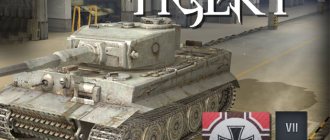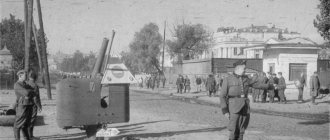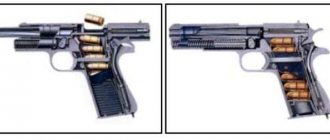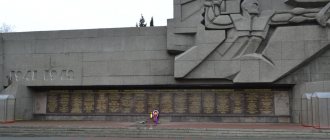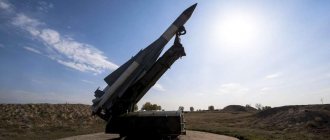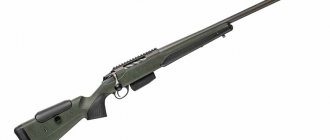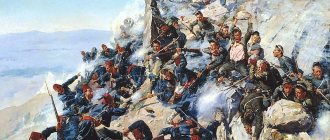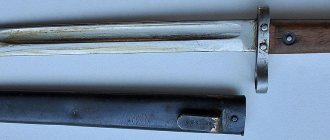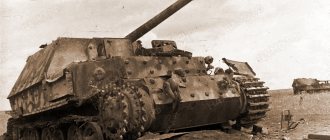The defense of Petropavlovsk during the Crimean War, which lasted from 1853 to 1856, is one of the most remarkable pages in the history of wars of the Russian people.
A small garrison of the Kamchatka city of Petropavlovsk was able to repel the landing of the Anglo-French squadron. On the territory of the main bay of the Kamchatka Peninsula - Avachinskaya Bay - there is one of the many bays called Petropavlovskaya. On the western side, this small bay is separated from Avachinskaya Bay by the Signalny Peninsula, and on the eastern side by Petrovka Mountain.
By the end of the 40s of the 9th century, the armed forces of Kamchatka numbered 200 people - 100 Cossacks and 100 naval officers. These people were involved in governing not only Peter and Paul Bay, but the entire peninsula. They were policemen, workers, and a garrison.
Muravyov's plans
Governor-General of Eastern Siberia Nikolai Nikolaevich Muravyov (from 1858 - Count Muravyov-Amursky), who visited Kamchatka in 1849, decided to boost the economy of the peninsula by developing cattle breeding, agriculture, coal mining, whaling and much more. Already at that time, several years before the start of military battles, Muravyov turned his attention to the aggression of the British, who had plans for an invasion of the peninsula.
Nikolai Nikolaevich Muravyov-Amursky
In his letter to one of the Nikolaev ministers, Muravyov wrote that the British intended to artificially create a short-term military conflict with Russia. And then, having reconciled with her, he will no longer want to return the conquered Avacha Bay to her ownership. And, even after paying a high duty, England will be able to more than compensate for its costs in a short period of time. After all, you can make a lot of money from the whaling industry alone. Muravyov also pointed out that the British were unlikely to allow any outsider into their maritime possessions duty-free. The minister agreed with Muravyov’s opinion and tried in every possible way to support him.
After some time, Muravyov pointed out that it was a priority for the British to conquer Kamchatka, completely devastating it. Establish your dominance on the peninsula, thereby cutting off Russia from the ocean.
In connection with such plans of England, Muravyov believed that it was now necessary to carry out preparatory actions for the defense of the Far East. And it would be right to transport the necessary protective equipment along the Amur River. After all, by carrying out transportation by other routes, the enemy can easily determine plans for defensive actions, calculate the number of soldiers, guns, and much more.
From Muravyov’s report it became known that he had a developed plan for the defense of the entire territory of Avachinskaya Bay, including the construction of a powerful defensive fortress. And due to the fact that the city and port, according to Muravyov, were vulnerable, they should have been moved to the territory of Tarya Bay. And connect the said bay with powerful batteries that will directly defend the gate to Avachinsky Bay. As for the exit from Avachinskaya Bay in the event of a blockade of Petropavlovsk, Muravyov proposed connecting Tarya with another bay of the peninsula - Yagodova. The strengthening measures proposed by Muravyov required the expenditure of a large number of naval forces and at least 300 large-caliber guns, most of which were supposed to be bomb-type.
While in Petropavlovsk back in 1849, Muravyov personally inspected the territory and indicated specific places where batteries needed to be installed. By the way, one of these batteries, longer than the others at the end of August 1854, was able to keep the enemy from further breaking through into the bay.
The head of Kamchatka at that time was Rostislav Grigorievich Mashin, to whom Muravyov advised, in the event of an enemy landing, to defend himself with grapeshot from precisely the places that he had indicated earlier.
A detailed plan of military operations, carefully worked out by Muravyov and approved by some officials at the top, was plotted on the corresponding maps. At the end of his report, Muravyov stated that our soldiers must have weapons of the same quality as those available to the enemy.
After some time, it became clear that all of Administrator Muravyov’s plans were not destined to come true. A larger number of government officials considered the actions proposed by Muravyov for defense and raising the economy in Kamchatka to be inappropriate. Many ministers attributed his plan of action to wild imagination or fantasy.
Preparing for defense
Shortly before the start of the Crimean War, Kamchatka acquired the status of an independent separate region. The board was entrusted to the military governor Vasily Stepanovich Zavoiko, who was also the port commander. As a result of such events, the decision was made to move the port of Okhotsk to Petropavlovsk. As a result, this port became the main commercial and military facility in the Pacific Ocean. In a short period of time, new structures were erected - medical hospitals, military barracks, marinas. A foundry was also built, and a brick factory was built on the territory of Tarja. Measures were taken to improve the quality of the “dog routes”, and work was carried out to build a coastal fleet. The governor of Kamchatka was able to raise agriculture to the proper level. Under his leadership, new forges, mills and much more were built.
Vasily Stepanovich Zavoiko
At the beginning of 1850, the Okhotsk garrison was transferred to Petropavlovsk, and from 1852 to 1854, the forces of the ground forces were increased, a sufficient number of shells and artillery were transferred, and the Aurora and Dvina ships were towed.
For example, the military frigate Dvina transported about 400 Siberian soldiers to Petropavlovsk. Captain Arbuzov, who commanded the frigate, was able to organize accelerated training courses for these soldiers before the crossing began. Future participants in the heroic defense of Petropavlovsk learned to control an artillery gun, navigate wooded and rough terrain, quickly make decisions and act while in loose formation.
The leadership of Petropavlovsk became aware of the attack of the British and French on Kamchatka for certain only at the beginning of June 1854. Vasily Zavoiko, who not long ago took the post of governor of Kamchatka, immediately spoke to the people. In his address, he called on everyone to gather all their will into a fist and fight the enemy until their last breath, not sparing their lives. He claimed that he was sincerely convinced of the victory of the great Russian people. That our valiant warriors will not flinch when they see the number of enemy troops and guns.
Zavoiko was unshakable in his belief in the heroism and dedication of Russian soldiers. And, at the end of his address, he said the following phrase: “I know that we will provide worthy resistance to the enemy, who will have the opportunity to verify this and feel all our military power to the fullest. The flag of Petropavlovsk will certainly become a witness to the heroism, honor and feats performed by the valiant Russian soldiers.” After the French and British officially declared war on Russia, the corvette Olivutsa was transferred to Kamchatka. The command of the corvette was ordered to conduct defensive actions until the last shell and, making every effort, expel the enemy from the territory of the peninsula.
The naval command no longer had any doubts about the attack of the British and French on Russia. This confidence was confirmed by the massive concentration of the Anglo-French squadron in the Pacific Ocean. In addition, newspapers in America and Europe reported that the British were tasked with blocking Russian ports. The command of the English fleet sent, in addition to the existing ships, the frigate "Peak", which was supposed to attack the Russian ship "Diana".
The enemy, first of all, conducted close observation and tried to accurately determine the location of the main concentration of the Russian squadron in the Pacific Ocean. Such a place, according to the British and French, could be Petropavlovsk, which is located on the territory of Avacha Bay. At the very beginning of July 1854, the frigate Aurora, commanded by Ivan Nikolaevich Izylmentyev, completed its long voyage. The journey was extremely difficult. Incessant storms caused numerous significant damages to the frigate. Supplies of fresh water and food were running low, and almost the entire crew suffered from scurvy. Due to this state of affairs, the commander of the frigate decided to end the voyage and change course.
The final destination of the frigate was Petropavlovsk. Zavoiko invited Izylmentyev to stay in the city for the duration of the upcoming hostilities. To which the captain of the ship readily agreed, deciding to assist in repelling the attack of the Anglo-French squadron. For more than two months, the population of Kamchatka carried out preparatory work. Many fortifications were built by hand. In mountainous areas, special small areas were prepared for the installation of guns, which were also dragged there by hand. About 1,700 people took part in preparing Petropavlovsk for defensive actions. In addition, over months of preparation, volunteer detachments were formed. These were mainly fire brigades and rifle brigades.
It was decided to position the ships “Dvina” and “Aurora” at the entrance to Peter and Paul Bay in such a way that their left sides were facing the open ocean. And the existing guns were removed from the starboard sides in order to strengthen the coastal defensive batteries. By mid-August, the entire coastal defense was put on high alert. By this time, the garrison consisted of at least 1,000 people (including ship crews). Before the enemy attack, Zavoiko managed to competently organize the defense of the city. The batteries were installed in an arc, evenly distributed throughout the entire coastline. There were 7 batteries in total, each of which had a sufficient number of large-caliber and field guns. Each gun had the ability to fire 37 aimed shots. Added to all this was the determination and tenacity of the Russian soldiers in achieving their goal. They were ready to fight to the end, the main thing was to prevent enemy forces from invading their land.
artist V.F. Dyakov. Battle in Avacha Bay
War on Russia by France and England was declared in early March 1854. The enemy was confident that they would achieve victory with little bloodshed - quickly and easily. Due to such confidence, the enemy was in no particular hurry to begin military operations. The Russian command skillfully took advantage of this slowness in the implementation of their plans by the Anglo-French troops, carrying out preparatory work. There was enough time to carry out preparatory work, which made it possible to meet the enemy with dignity, successfully repelling his counter-offensive.
August 18, 1854 is considered the beginning of military operations aimed at the defense of Petropavlovsk. At the entrance to Avachinskaya Bay there were three signal beacons. But only one of them, Mayachny, was properly equipped. It extended far into the Pacific Ocean. And the other two - Babushkin and Rakovy, receiving information from him about the events taking place, transmitted them directly to the Peter and Paul Bay. In the early morning of August 17, 1854, 6 enemy warships, which were heading for Petropavlovsk, came into view of the Russian patrol vessels. The city was notified of the need to prepare for defensive actions using a combat alarm signal. All women, old people and children were evacuated from the city. But the enemy was in no hurry to launch an attack. And only the next day, in the second half, the first shots were heard. The skirmish was short-lived, after which the enemy ships dropped anchor in a place inaccessible to our guns.
Avacha Bay
Vasily Stepanovich Zavoiko
Zavoiko began his service in the navy after graduating from the Nikolaev Navigation School, where seven-year-old Vasily was sent to study by his father, naval staff doctor Stepan Zavoiko. In 1821, Vasily passed the exams “in sciences related to maritime affairs” by a commission chaired by Admiral Greig, and was promoted to midshipman of the Black Sea Fleet and sent to the brig Mingrelia under the command of Lieutenant Commander Mikhail Stanyukovich. After completing the practical course in 1826, Vasily Zavoiko was promoted to midshipman and assigned to the 14th naval crew of the Baltic Fleet. The next year, the 17-year-old sailor took part in the Battle of Navarino together with Nakhimov, and then served under his command on the corvette Navarino.
July 27 is the birthday of Vasily Stepanovich Zavoiko
Soon after receiving the rank of lieutenant Zavoiko on the sea transport "America" during the circumnavigation of 1834-1836. under the command of Lieutenant Commander Ivan Shants visited Kamchatka. A year later, on the corvette Nikolai, he made a second voyage to Kamchatka and Alaska.
The enormous scale of economic activity, the vast scope for the use of human power - all this attracted Zavoiko to the region abounding in natural resources. The new governor began vigorous activity to organize the Petropavlovsk port. He personally examined Avacha Bay. He specified the location for the coastal artillery and began to improve the inner harbor of the port. Construction of various warehouses and a guest courtyard began on the port territory, where Russian and foreign sailors could relax. Zavoiko organized the delivery of food (grain, flour, salt, etc.) by two transport ships from Ayan. Millstones for the newly built mill were brought from there. Baking bread and preparing crackers, which were in great demand among sailors, were established right in the port where the bakery was built. A foundry grew up in the port. Within two years, without exceeding the repair cost, a schooner, a boat, dinghies, and a 12-oared boat were built. At Zavoiko’s request, the medical staff was strengthened; hospitals and clinics were established at the Paratunka and Malkinsky hot springs. During 1850-1851 They built four dozen houses, two barracks, several shops, a pharmacy, and a church.
Vasily Stepanovich Zavoiko paid great attention to the development of agriculture. He organized the Nikolaev cattle farm. In the village of Klyuchi he built a water mill and a forge; a weaving factory in Milkovo, and organized iron ore mining in Verkhne-Kamchatsk. As Petropavlovsk grew, so did the city's population. According to the 1852 census, 1,593 people lived here (1,177 males and 416 females).
Petropavlovsk port on Kamchatka. Lithograph from the mid-19th century. Photo: chrono.ru
First serious enemy attack
In the morning of August 18, 1854, the enemy began to shell Petropavlovsk, but Russian troops did not respond due to the fact that the firing points were located at a considerable distance. This day was remembered not only for its military actions, but also for the death of the admiral of the British troops, David Price, who committed suicide. After the tragedy, the French Admiral de Pointe took over leadership. A possible cause of suicide was probably fear of failure. The admiral, according to the testimony of his comrades, was very upset when he realized that the city was well fortified and quite ready for defense. It should also be noted that N.N. Muravyov did not believe the version of suicide - “Zavoiko was in vain to believe the prisoner’s story that Admiral Price allegedly shot himself. It is unheard of for a commander to shoot himself at the very beginning of a battle he hoped to win; Admiral Price couldn’t shoot himself and accidentally shoot himself with his pistol, for what purpose did he pick it up while on a frigate a mile from our battery...”
. David Price was buried on the shore of the Tarya Bay of Petropavlovsk-Kamchatsky.
David Price
The enemy launched the most decisive attack only on August 20, 1854. Four military vessels invaded the waters of Avacha Bay and fought a continuous battle for several hours. Only 8 guns of the Russian troops against 80 guns of the enemy were able to provide decent resistance.
Then, in the area of Mount Krasny Yar, an enemy landing force of 600 soldiers began to land. The commander of the battery closest to the landing site gave the order to begin a retreat deeper into Petropavlovsk, believing that it would not be possible to resist such a number of soldiers. French soldiers took up positions abandoned by Russian troops and planted their flag. After this, our guns opened fire on them, and the English steamer mistakenly struck their own soldiers.
By order of Zavoiko, reinforcements consisting of 230 of our sailors and soldiers arrived at the battery site. The French, unable to withstand such resistance, began to retreat to their boats, then departed on them to the parking lot of their ships. After some time, enemy ships opened fire on our battery, which defended the gate to the harbor. This battery was equipped with reliable shelters, parapets and was considered the most powerful defensive structure. Our soldiers fired, heroically fighting the enemy for several hours. After some time, the enemy stopped the attack, retreating to a safe distance.
At the end of this day, another of our batteries repelled an enemy attack. Our guns did not stop firing, sinking a boat with a landing party and hitting an English steamer with one cannonball. According to estimates, over the past 24 hours, 6 Russian soldiers were killed and 13 were wounded. By the beginning of the next day, all the consequences of the destructive enemy actions had been eliminated, but 3 cannon guns, nevertheless, could not be restored.
Fighting
On the evening of August 16 (28 new style), 1854, Major General Zavoiko received a message from distant lighthouses about the appearance of enemy ships. By order of the governor, the alarm was sounded in the port. The enemy squadron consisted of six ships: 2250 people, 212 guns. The detachment was headed by the English admiral David Price, his deputy was the Frenchman Fevrier Pointe. The first cannonball was launched from coastal battery No. 3, the enemy immediately responded with several shots, after which batteries No. 1, 2 and 4 opened fire. The enemy's attack on the move did not work. The squadron moved into the bay and anchored. The reason for such strange behavior of the squadron was the sudden death of the commander of the enemy squadron, Rear Admiral Price.
On August 20 (September 1), the enemies launched a new fierce assault on the Peter and Paul port. Military Governor V.S. During the battle, Zavoiko was in the hottest spots, showing with his presence an example of courage and heroism. At the end of the day, the officers gathered in Zavoiko’s house, sorted out the details of the battle, and reported on the dead and wounded.
